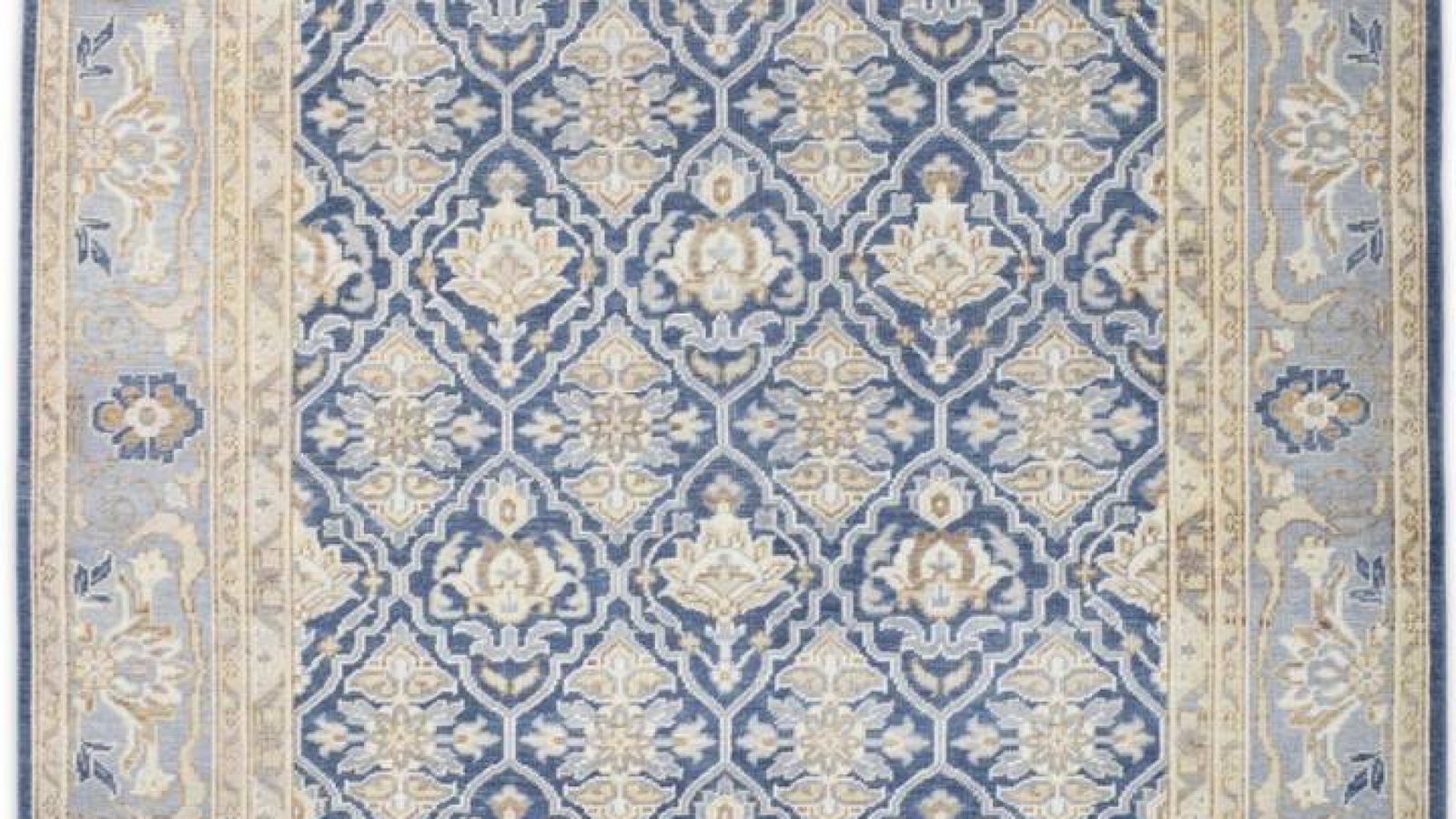Hand-knotted rugs are traditional, artisan-made textiles recognized for their durability and intricate designs. A distinctive feature of these rugs is their meticulous crafting process, which involves knotting individual yarns onto a loom’s warp (vertical foundation threads) by hand. This age-old technique, which requires considerable skill and patience, yields textiles that are not only aesthetically rich but also highly durable.
These rugs are crafted using a traditional hand-knotting technique on a specially designed loom. This ancient method of rug-making, which originated in Central Asia, dates back to the 4th century B.C. This weaving technique is predominant in the creation of traditional rugs, with some of the most well-known types being Oriental rugs, Persian rugs, and Kashmir rugs.
This unique weaving method involves tying thousands of individual knots to a rug foundation, forming the rug’s pile. The weaving typically progresses from the bottom upward, with each knot meticulously placed to contribute to the overall design and durability of the rug. In this blog we will be identifying a hand-knotted rug via different ways.
How to Identify a Hand-Knotted Rug?
The creation of hand-knotted rugs is a labor-intensive process that demands high levels of craftsmanship. Creating a hand-knotted rug is a meticulous process that can last from three months to over a year, depending on its size, quality, and the materials used. Throughout its creation, the rug passes through the hands of 180 artisans, each perfecting this ancient craft. After the weaving is complete, the rug undergoes a thorough inspection before being sent to the finishing center. There, it is subjected to up to 18 different processes to ensure its quality before it’s ready to enhance the beauty of your living room. Explore our collection of eclectic modern rugs, each crafted one knot at a time. So let’s learn few tips and tricks of identifying a hand-knotted rug:
Symmetry of the design
Hand-knotted rugs feature the same design on both the front and the back. The primary difference is that the front side is plush and soft, while the back is firm, displaying the intricately woven design. In contrast, a hand-tufted rug typically has a latex backing and lacks any design on its reverse side. If a rug possesses a backing material, it is not a genuine traditional hand-knotted rug.
Knots of the rug
Hand-knotted rugs often display slightly uneven knots due to their handcrafted nature, contrasting with the perfect uniformity of machine-made rugs. The knots in a traditional hand-knotted rug are extremely tight and closely tied, contributing to its durability and intricate design. Conversely, machine-made rugs feature what are essentially faux knots; the fibers are made to look knotted but are actually attached to the foundation material using high pressure and heat, which does not provide the same authenticity or quality.
Fringes of the rug
The fringes of a rug also serve as key indicators of its construction method. In machine-made rugs, fringes are typically sewn onto the back as an additional decorative feature. However, in authentic hand-knotted rugs, the fringes are extensions of the warp threads that form the foundation of the rug, seamlessly integrated into the overall design rather than merely serving as adornment. In traditional hand-knotted rugs, each knot is tied to these warp threads, naturally creating the fringes through the process
Quality of the rug
The quality of a rug is influenced by various factors, including the knots per square inch, the quality of the material or yarn, and the type of dye utilized in the manufacturing process. Knot density, in particular, plays a crucial role in determining a rug’s quality. This term refers to the number of knots present per square inch within the rug’s structure.
Types of Hand-Knotted rugs
Hand-knotted rugs command high prices globally due to their exceptional durability, intricate weaving using premium wool or silk, and the skilled craftsmanship required to complete each piece. The meticulous process demands significant time for completion.
Owning hand-knotted rugs reflects not only a sense of elegance but also a deep appreciation for artisanal craftsmanship and artistic handmade goods. Once acquired, these rugs become cherished heirlooms, admired and treasured for generations to come.
For identifying a hand-knotted rug we should be well aware of their types, which are enlisted below:
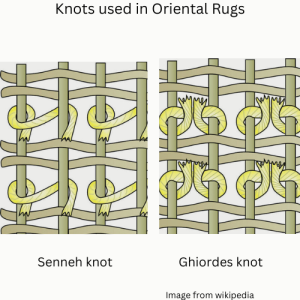
Persian Weave
Authentic Persian rugs originate from their traditional birthplace, Iran. The intricate patterns and designs of Persian rugs have established a rich artistic tradition that persisted throughout the Persian Empire, extending to the final royal dynasty of Iran. However, Persian hand-knotted rugs are also crafted in various Southeast Asian countries and are commonly referred to as Oriental area rugs.
Nepali Weave
Rugs crafted in India and Nepal, known as Nepali rugs, are also referred to as Indo-Tibetan or Indo-Nepali rugs. These rugs employ distinct weaving patterns and utilize steel rods known as ‘sariya’ in their construction
Turkish Weave
Turkish hand-knotted rugs are renowned for their unique knot-tying technique, which involves looping the knot around a cotton string.
Below are the common types of hand-knotted rugs:
- Baluchi
- Chobi
- Beljik
- Heriz
- Gabbeh,
- Khan-Mamdiu
- Kazak
- Shairwan
- Qashqai
Hand-Knotting Techniques
There are three types of knotting techniques that are
- Ghiordes or Turkish knot
- Senneh or Persian knots
- Jufti knots
Craftsmen typically prefer using the Persian knot and Turkish knot techniques. However, there is a third type of knot known as the Jufti knot. This method is considered substandard and is not commonly utilized, particularly in higher-quality rugs
- Senneh or Persian knots
These are also known as Persian knots, they are mainly used in countries like:
- Iran
- Pakistan
- Afghanistan
- India
- Central Asia
This knot, also referred to as a double knot, is distinctive for its asymmetrical formation. Persian knots, known for their asymmetry, are employed for intricate detailing in rugs requiring fine craftsmanship
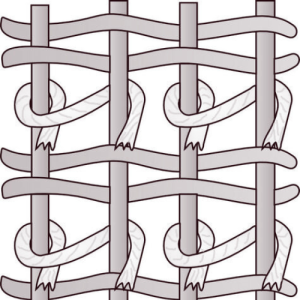
- Turkish knots
Turkish knots, also known as symmetrical or single-shot knots or Ghiordes knots, are favored by Anatolian and Caucasian weaving groups in Turkey, as well as by other Turkish and Kurdish tribes in Iran. In creating the Turkish knot, the yarn is looped around two adjacent warp strands and then pulled back through the space between them, emerging from the center. This method results in a highly secure pile construction, ensuring durability and longevity in the rug.
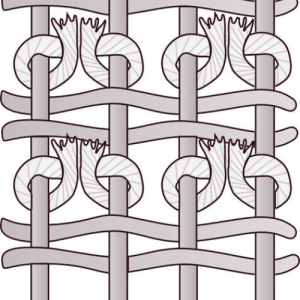
- Jufti Knots
The Jufti knot, primarily found in the Khorassan region of Iran, is the least favored among rug-making techniques. These knots are quicker to tie compared to other types, as they are less dense and result in less intricate weaving. Consequently, rugs made with Jufti knots are not as strong, durable, or expensive. They are commonly used for everyday rugs that are more affordable, making them less sought after for superior quality rugs. Due to their less dense nature, Jufti knots require less time to create compared to other knot types
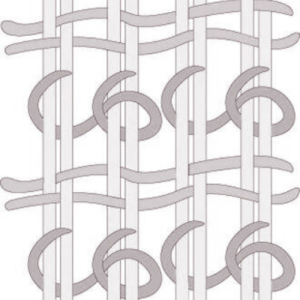
How to calculate knots per-square inch(KPSI)?
A key metric in evaluating the quality and durability of a hand-knotted rug is the knots per square inch (KPSI). However, this measurement is just one aspect to consider when assessing a rug.
To calculate KPSI, one can flip the rug and use an inch scale vertically and horizontally, measuring 1 inch each way and then multiplying both figures.
The knots in hand-knotted rugs can be likened to pixels in an image—the higher the density of knots per square inch, the clearer and more intricate the design. As the density of knots increases, the clarity and elaborateness of the rug’s design improve. This high density of knots contributes to the durability of hand-knotted rugs, allowing them to withstand the test of time and be passed down through generations
FAQs
How do I know if my rug is hand-knotted?
Determining whether a rug is handwoven involves examining its structure and weave. In hand-knotted rugs, the weaving and knots typically exhibit slight variations, lacking exact uniformity. It’s common to find some knots larger than others, contributing to the rug’s unique character
How can one determine if a rug is of good quality or not?
To evaluate the quality of a rug, scrutinize the material, knot count, and craftsmanship. Premium rugs typically utilize natural fibers such as wool or silk, ensuring both durability and a luxurious texture. Assess the knot count—a higher count signifies greater intricacy and durability. When examining the rug, flip it over to inspect the consistency and tightness of the knots; a well-crafted rug exhibits uniformity in its weaving but still can be a bit uneven because of hand-knotted. Handmade rugs boast precise detailing, while machine-made counterparts lack the same level of intricacy. Lastly, consider the rug’s weight and thickness—a sturdier, heavier feel often indicates superior quality compared to lighter, flimsier options.
Is buying a hand-knotted rug the best choice?
Yes, Hand-knotted rugs are known for their remarkable durability and longevity. They have the potential to endure for generations, often evolving into treasured family heirlooms. Despite their higher cost, their unparalleled quality, meticulous craftsmanship, and enduring charm render them a wise and enduring investment


 Cart is empty
Cart is empty 